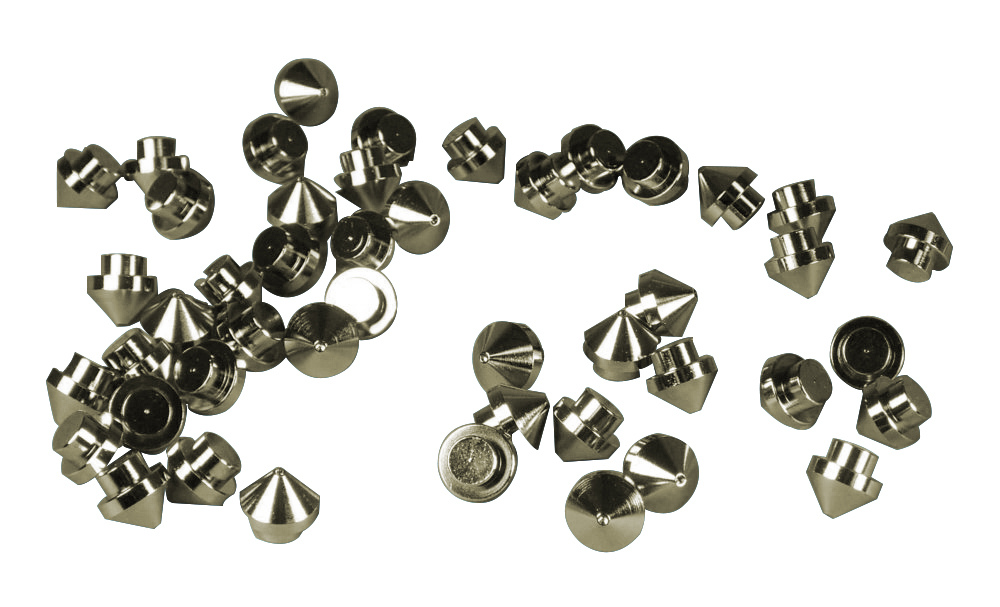Coefficient of Friction
Anyone who has examined or taken apart an electric motor has likely noticed that the shaft is often steel and the bushings are often brass or bronze. This combination of materials is often chosen because such materials slide easily together – they have a low coefficient of friction.
The coefficient of friction is the ratio of the friction force to normal force. For example, if it takes 1 lb of force to slide a 10 lb weight along a level surface the coefficient of friction is 0.1. The coefficient depends on the two materials involved. Although the coefficient of friction is usually specified for material pairs, there are other factors that are involved such as temperature, velocity, atmosphere, shape, etc. Thermoplastics such as nylon, HDPE and PTFE are often used for low friction bearings as their coefficient of friction declines with increasing loads.
Static coefficient of friction is the ratio when the objects are stationary relative to each other.
Dynamic coefficient of friction is the ratio when the objects have relative movement. Usually the dynamic coefficient of friction is less than the static coefficient although in some cases such as PTFE on PTFE they are essentially the same.
The charts below gives the static coefficient of friction for several combinations of materials in a dry and clean state:
For steel against:
- PTFE – 0.04
- Graphite – 0.1
- Phosphor-bronze – 0.35
- Cast iron – 0.4
- Acrylic – 0.4 – 0.5
- Copper – 0.53
- Brass – 0.51
- Tungsten carbide – 0.4 – 0.6
- Aluminum – 0.61
- Zinc – Cast iron – 0.85
- Copper – Cast iron – 1.05
- Copper – Glass – 0.68
- Glass – metal – 0.5 – 0.7
- Diamond – metal – 0.1 – 0.15
- Wood – metal – 0.2 – 0.6
For material to same material:
- Steel – 0.80 /machine-shop/Custom-PTFE-Parts-Machined/page492.html/Teflon/page463.html">PTFE – 0.04
- Glass – 0.94Aluminum – 1.35
- Copper – 1.0
- Iron – 1.0
- Silver – 1.4
- Zinc – 0.6
- Glass – 0.9 – 1.0
- Diamond – 0.1
- Polystyrene – 0.5
- Nylon – 0.15 – 0.25
- Wood – 0.25 – 0.5
- BAM (made of boron, aluminum and magnesium) – 0.02
Reducing friction
There are many method of reducing friction. For example, wheels and ball bearings change sliding friction to rolling friction which dissipates much less energy.
Lubricants, such as oil, water or grease, placed between surfaces, can reduce the coefficient of friction substantially.
Custom Machining
If you need custom mechanical parts machined – we would be pleased to quote your job using conventional CAD files or you can use our unique free CAD software where you can: design your part quickly and easily, get instant pricing, and order online.
